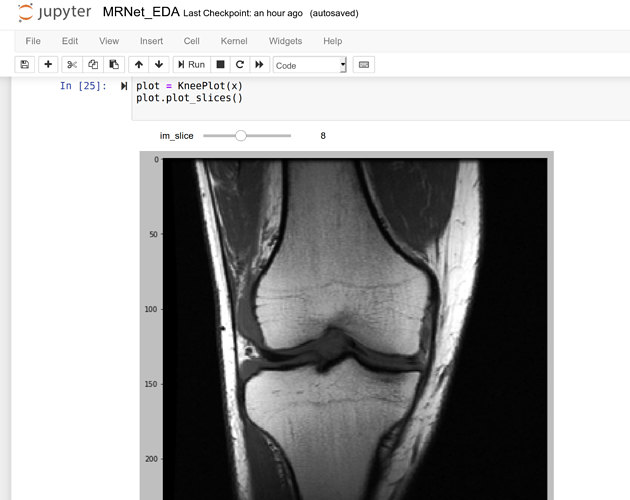Got a chance to download and briefly review the data this morning. Here’s a screenshot from the EDA nb I’m putting together with the code used to generate the plot below.
from ipywidgets import interactive
from IPython.display import display
plt.style.use('grayscale')
class KneePlot():
def __init__(self, x, figsize=(10, 10)):
self.x = x
self.slice_range = (0, self.x.shape[0] - 1)
self.resize(figsize)
def _plot_slice(self, im_slice):
fig, ax = plt.subplots(1, 1, figsize=self.figsize)
ax.imshow(self.x[im_slice, :, :])
plt.show()
def resize(self, figsize):
self.figsize = figsize
self.interactive_plot = interactive(self._plot_slice, im_slice=self.slice_range)
self.output = self.interactive_plot.children[-1]
self.output.layout.height = '{}px'.format(60 * self.figsize[1])
def show(self):
display(self.interactive_plot)
With this code, you can generate the interactive plot I have shown, so you can scroll through the images and get a sense of what we’re looking at.
When I have a little more time, I’ll send a link to the full EDA nb.
